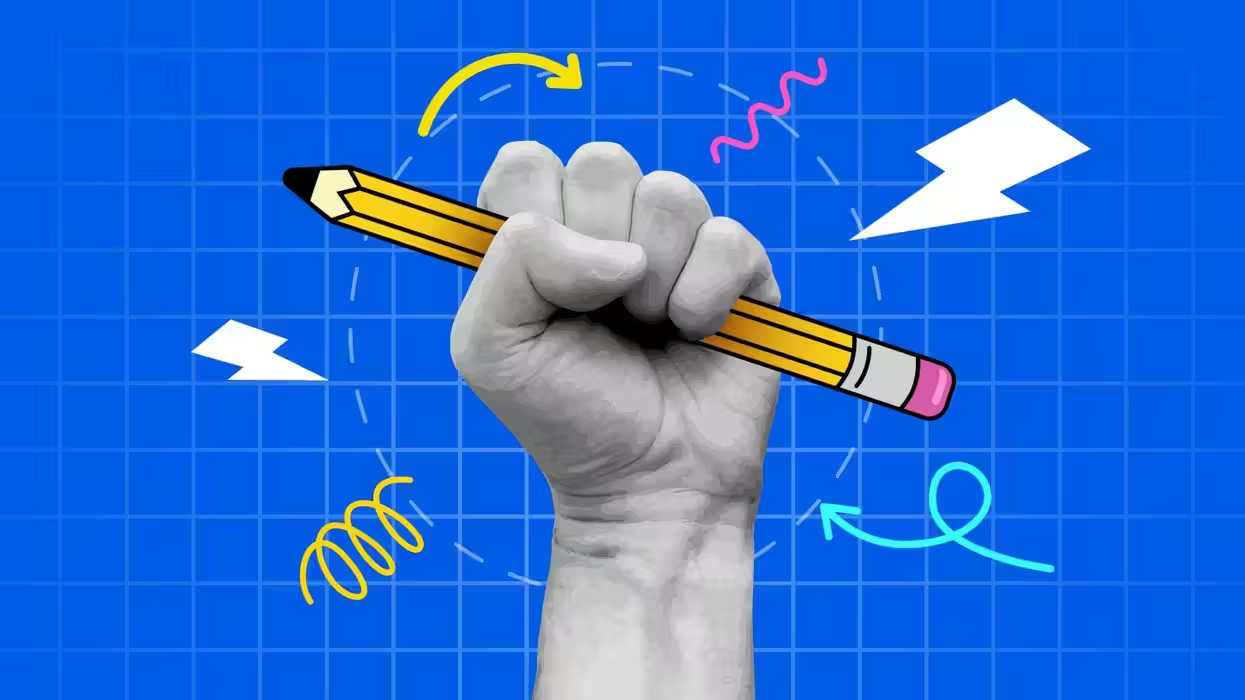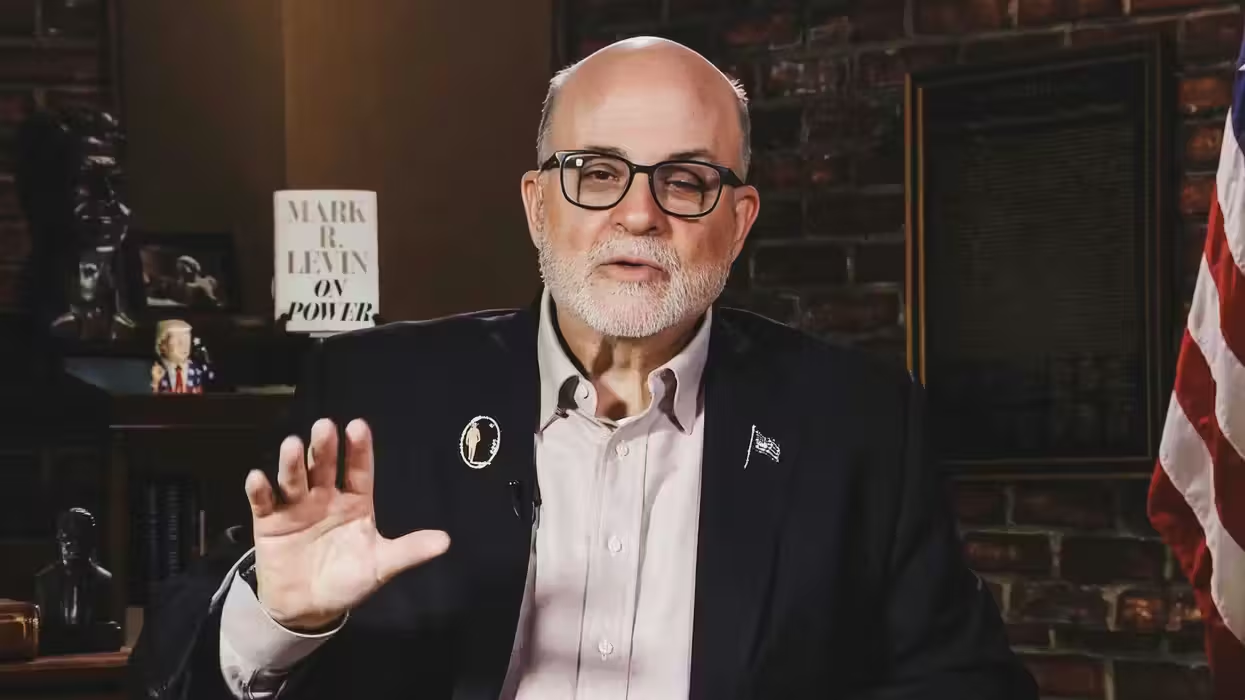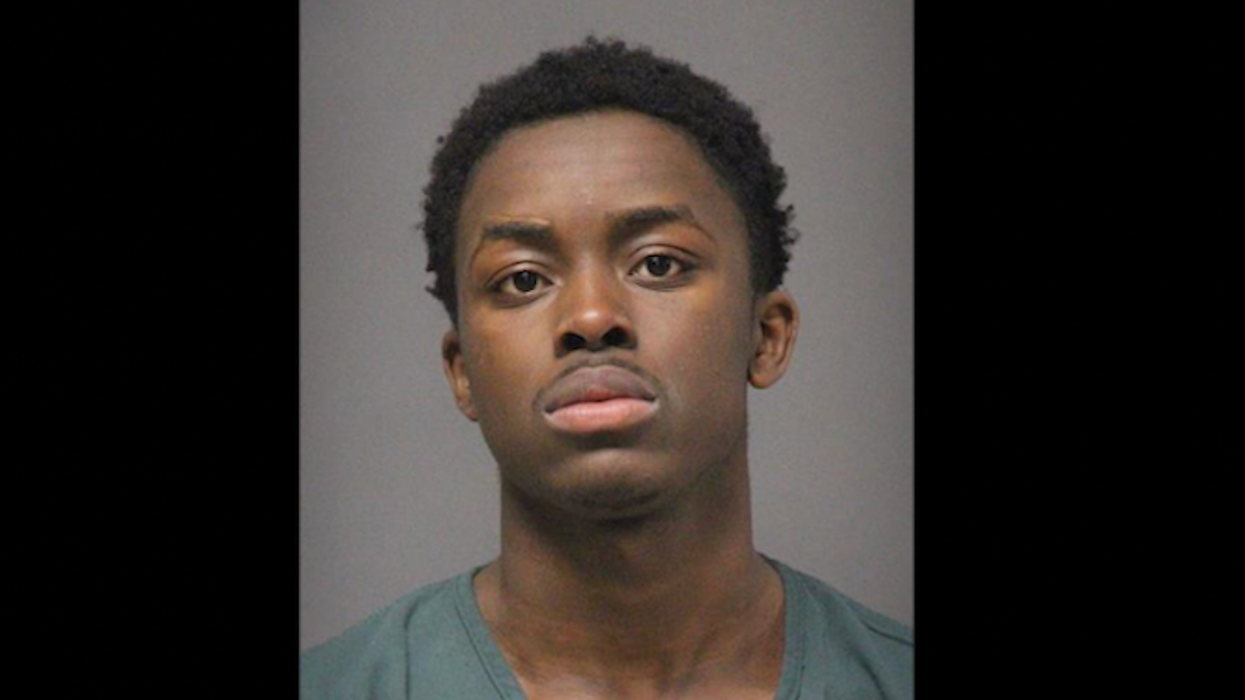
© 2025 Blaze Media LLC. All rights reserved.
“Things are barely black and white.”
 Adolf Hitler and Hermann Goering wave to a torchlight parade in honor of Hitler's appointment as chancellor. Berlin, Germany, January 30, 1933 (Photo credit: United States Holocaust Memorial Museum)
Adolf Hitler and Hermann Goering wave to a torchlight parade in honor of Hitler's appointment as chancellor. Berlin, Germany, January 30, 1933 (Photo credit: United States Holocaust Memorial Museum)
Israel's Yad Vashem Holocaust Memorial is considering giving a notorious Nazi leader's brother its highest honor. That is, to be inducted into the "Righteous Among the Nations" -- the group of non-Jews honored for risking their safety to save Jews in their hour of need.
Hermann Goering was a leading Nazi official. He founded the Gestapo, commanded the Luftwaffe and for a while was the top deputy to Hitler. Besides his role in the extermination of the Jews, Goering also had a brisk business in amassing works of art – totaling 2,000 pieces - looted from Europe’s Jews. To this day, the Goering name, like Hitler and Eichmann, evokes among survivors the worst memories of the Holocaust.
Which is one reason Yad Vashem’s deliberation regarding Hermann Goering’s younger brother, Albert, will be no easy one.
According to historians, survivors and media accounts, Albert saved dozens of Jews and others during the Holocaust, at his own peril.
Even though his brother was one of the party leaders, Albert resisted the Nazi party, often publicly. He took a stand against those trying to humiliate Jews, helped Jews escape Germany, and even secured the release of some Jews from concentration camps. As a director at the Czech industrial giant Skoda, he was able to send trucks to the camps and request workers for his factory. Those trucks would then stop in the forest and free those onboard.
 Albert Goering (Goering family photo)
Albert Goering (Goering family photo)
Despite his activities, after the war he was shunned when he went back to Germany due to sharing the same last name as his brother Hermann, who was sentenced to death at the Nuremberg Trials but committed suicide before his sentence was carried out.
Spiegel Online correspondent Gerhard Spörl examined Yad Vashem’s consideration of Albert Goering and provided further examples of his extraordinary deeds:
It is difficult to say how many people he saved, Jews and non-Jews. He probably didn't know himself, because he didn't know all the people he helped. He retrieved some from concentration camps and helped others escape abroad. He set up bank accounts for them in Switzerland so that they could survive while in exile. He gave money to members of the resistance, and he looked the other way when they committed sabotage or stole weapons for their illegal struggle at the weapons factory where he held a high-ranking position.[…]in Vienna, shortly after the Nazi invasion. When Nazi stormtroopers raided the Raber paint shop on Wehringerstrasse, they couldn't find the owner and collared his 75-year-old mother instead. They hung a sign around her neck that read: "I am a dirty Jew," and forced her to sit in the shop's window. When Göring happened upon the scene, he pushed his way through the jeering onlookers, removed the sign from the humiliated woman and led her away from the crowd. When a few lower-ranking members of the SS blocked his way, he showed them his identification and they let him go.
[…]Albert Göring rescued his doctor, Max Wolf, from being sent to the Dachau concentration camp. He obtained exit permits for other Jews, and he transferred the confiscated assets of Jews to Zurich. He personally took his friend Oskar Pilzer, a film producer and former president of Austria's largest film production company, to the border at the last possible moment.
Later, in Prague, he used letterhead with the name Göring printed on it to write a letter to the camp commandant in Dachau, in which he demanded the release of Josef Charvát, a doctor and resistance fighter. The commandant had two men named Charvát in the camp and, to be on the safe side, released them both.
Even though they had opposite political opinions, Hermann Goering protected his brother and would not let his Gestapo colleagues harass Albert despite his anti-Nazi campaign.
When Albert surrendered to the Americans in 1945, nobody believed that he had saved Jews even after he had given them a list of 34 people he had saved. He was imprisoned for two years.
The 2009 book "Thirty-Four" details Albert's story. Its author William Hastings Burke began an online petition to Yad Vashem asking the institution to recognize Albert's sacrifice.
To learn more about how individuals are chosen as “Righteous Among the Nations,” TheBlaze spoke with Yad Vashem Spokeswoman Estee Yaari. The program is 50 years old and is considered an integral part of the mandate the government granted Yad Vashem when it was established 50 years ago. Yaari says that nearly 25,000 brave individuals have been recognized to date, with one characteristic that bonds them: they each saved Jews while risking their own safety.
“Primary source material is compiled, that is, survivor testimony or documents that would substantiate the rescue story. Once material is compiled…the material is looked at and researched. We go to archives when it’s felt there’s enough relevant material,” Yaari explained.
At that point, the file is presented to the Commission for the Designation for the Righteous Among the Nations. That commission includes Holocaust survivors, researchers and historians.
“They work autonomously like a jury deliberates. They look at all the material and take a vote. They decide whether the file in front of them meets the strict criteria for Righteous Among the Nations,” Yaari said.
“The commission meets behind closed doors so they can be free from outside pressures and focus only on the material before them,” explained Yaari.
“The main criterion is that they risked their lives to rescue Jews during the Holocaust.,” Yaari added.
The risk factor can be complicated to determine. Weighing against a candidate would be: Were they paid for helping Jews escape?
Yaari says the research and deliberation process can take months or even years depending on the “clear cut quality of the materials.”
If someone is recognized, they or their next of kin receive a certificate and a medal. Their name is engraved on the Wall of Honor in Yad Vashem’s Garden of Righteous Among the Nations.
Today, most of those heroes are recognized posthumously. Albert Goering died in 1966.
Because researchers are still investigating Goering’s case, the commission has not yet had a chance to deliberate on its merits. Yaari said that Yad Vashem has been gathering information on his case for two years, a reflection of how complicated it is.
Suggesting the commission would not discriminate against an individual merely because of his name, Yaari explained, “Every case of Righteous Among the Nations is really looked at in its own merits and if it meets the criteria, great.”
“There’s a lot of nuance. Things are barely black and white. There’s complexity, especially when you deal with the Holocaust. That’s one of things we deal with all the time,” Yaari added.
More information about the Righteous Among the Nations including a country breakdown of recipients can be found here.
Want to leave a tip?
We answer to you. Help keep our content free of advertisers and big tech censorship by leaving a tip today.
Want to join the conversation?
Already a subscriber?
more stories
Sign up for the Blaze newsletter
By signing up, you agree to our Privacy Policy and Terms of Use, and agree to receive content that may sometimes include advertisements. You may opt out at any time.
Related Content
© 2025 Blaze Media LLC. All rights reserved.
Get the stories that matter most delivered directly to your inbox.
By signing up, you agree to our Privacy Policy and Terms of Use, and agree to receive content that may sometimes include advertisements. You may opt out at any time.






